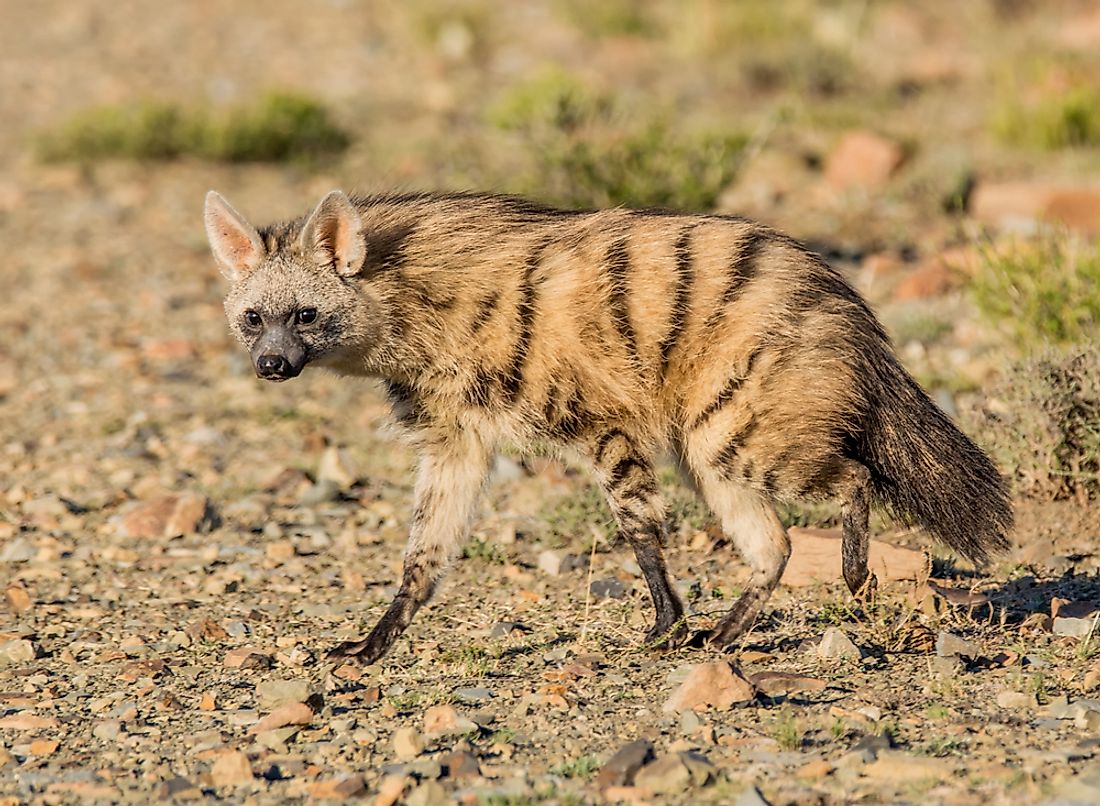Aardwolf Facts - Animals of Africa

Aardwolf is a name derived from Afrikaans meaning "earth wolf". The aardwolf is a mammal of the hyena family though smaller than the hyena. IUCN categorizes the aardwolf as a least concern species due to its relatively stable population. Though the animal occurs in small numbers within their territories, there are no apparent threats to their population. Humans, however, wrongfully hunt them as a possible threat to their livestock probably due to their similarity to hyenas. The aardwolf have poorly developed molars and a restricted diet.
4. Physical Description
The aardwolf is a small animal that closely resembles the striped hyena with its yellowish-brown coat covered in black vertical stripes and a black colored mane running from the neck to the back. The bushy tail has a black tip and a length of between 7.9 and 11.8 inches. The total body and tail length averages between 22 inches and 31 inches and a weight of 15 -22 lbs, sometimes reaching 33 lbs. Aardwolves females in the Eastern African range are larger than their South African counterparts. The upper parts of the legs have stripes while the lower legs are black. The forelegs have four toes while the hind legs have five toes. The muzzle is thinner than that of the hyena, but they have similar large ears.
3. Diet
The aardwolf is primarily insectivorous, feeding on termites and insect larvae. Rarely, the aardwolf eats eggs, small mammals, birds and beetles in carrion. The aardwolf forages solitarily especially in the night and sometimes during the day when night temperatures are too low. Their sharp hearing helps them locate termite nests quickly and use their broad, sticky tongues to lick the termites off their mounds. The aardwolf, however, spares some termites for reconstruction of their population and food for the future. The aardwolf, unlike the hyena, does not eat carrion or prey upon large animals.
2. Habitat and Range
The aardwolf is native to southern and eastern Africa. The availability of termites and insects influences the distribution of the aardwolf. The aardwolf prefers semi-arid areas, open dry plains, heavily grazed grasslands, the Savannah, farmlands, and areas with scrubs. They avoid the Miombo woodlands and mountainous areas. The aardwolf mainly occupies Botswana, Karoo, and the Northern Cape Province in southern Africa. In East Africa, they live in northern Tanzania, Kenya, Northeastern Uganda, Somalia, southern, eastern and part of Northern Ethiopia, parts of Eritrea, Djibouti, and Sudan and a small population in the south of Egypt.
1. Behavior
The aardwolf is a shy and nocturnal animal but displays diurnal characteristics in cold weather. In such cold conditions, the aardwolf forages during the day and stays in during the night in an effort to conserve energy. When threatened, the aardwolf raises its mane and may chase the enemy for up to 400m. The aardwolf is slow and rarely catches up with animals intruding its territory, but when it does, a fight breaks out. The aardwolf produces foul-smelling anal secretions that it uses to secure its territory and sometimes to scare away intruders. Females forage for food while males guard the dens.











